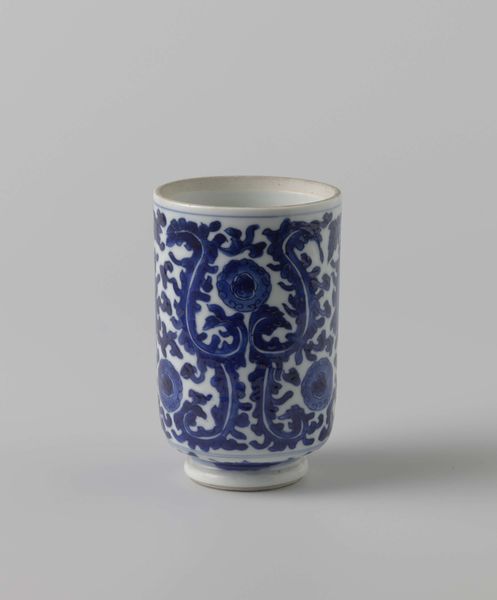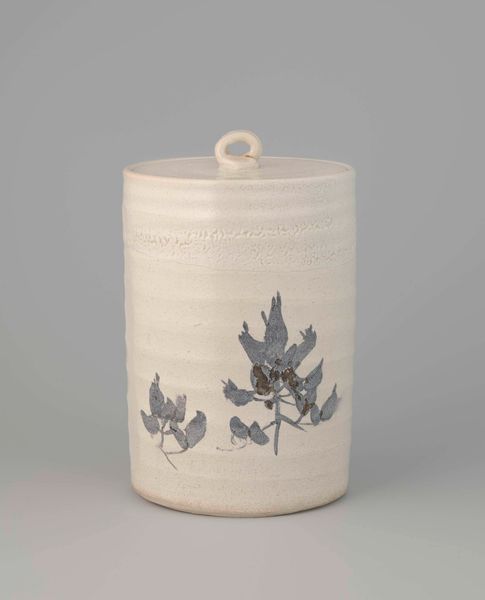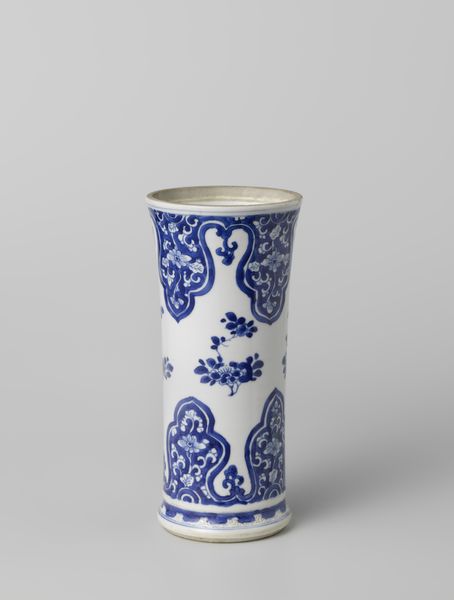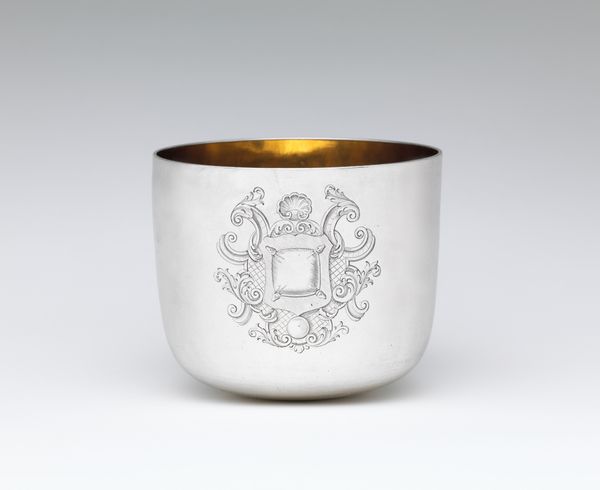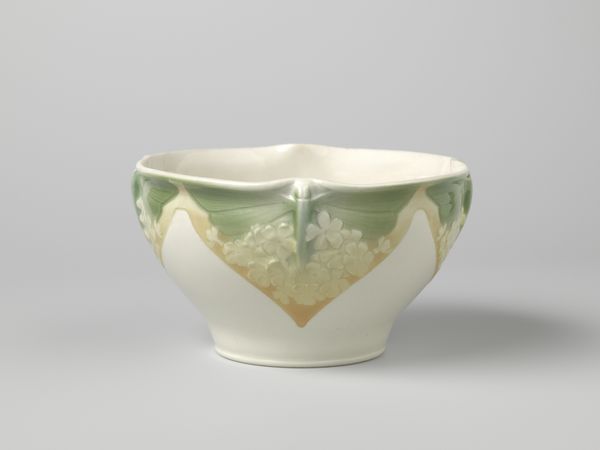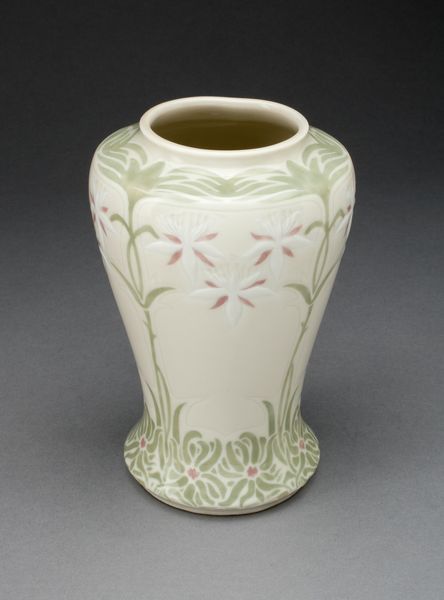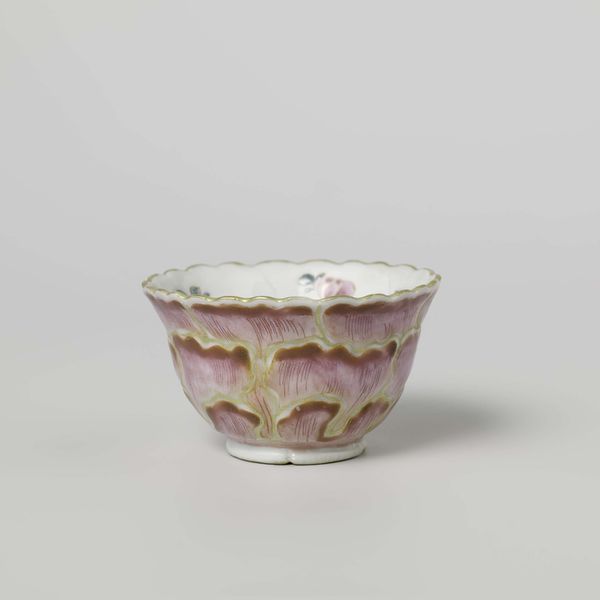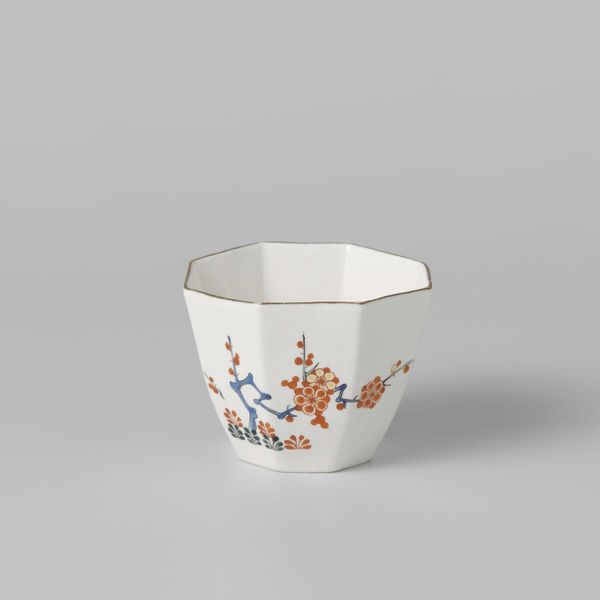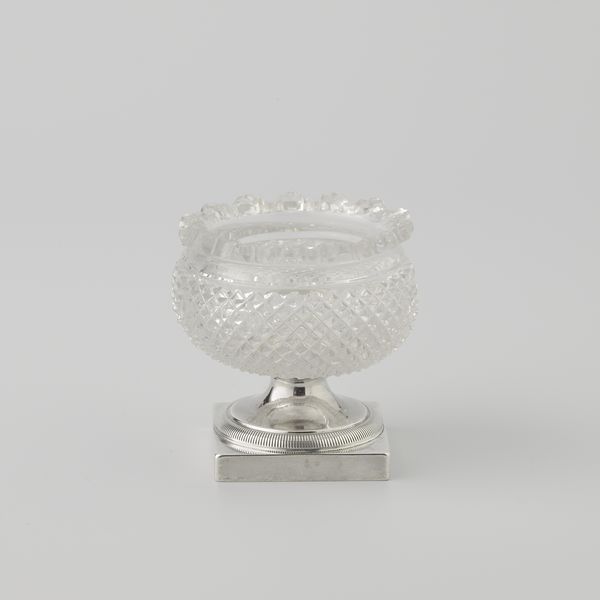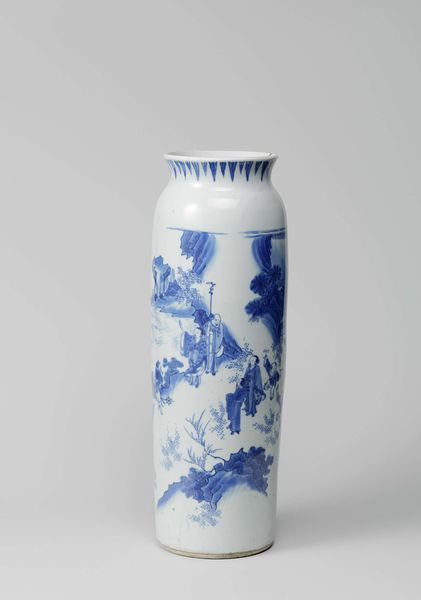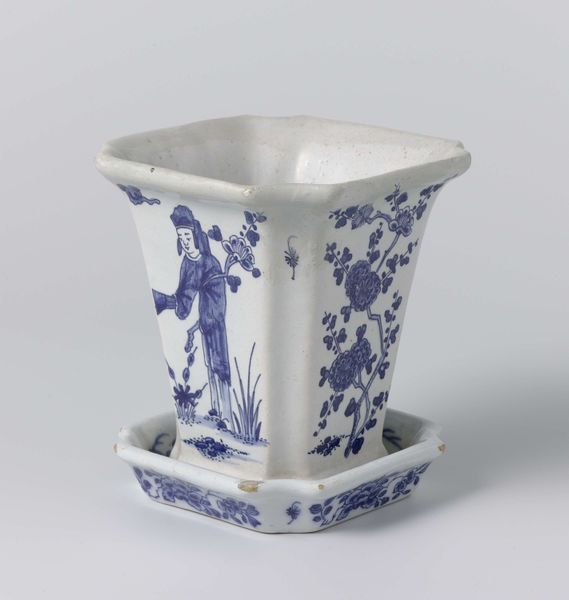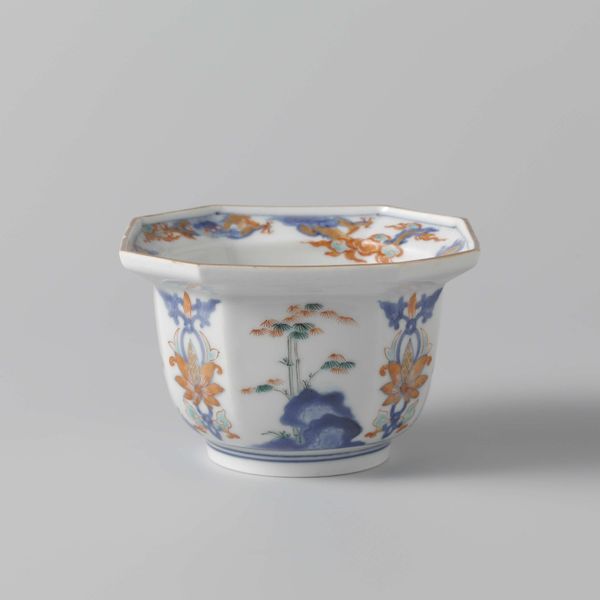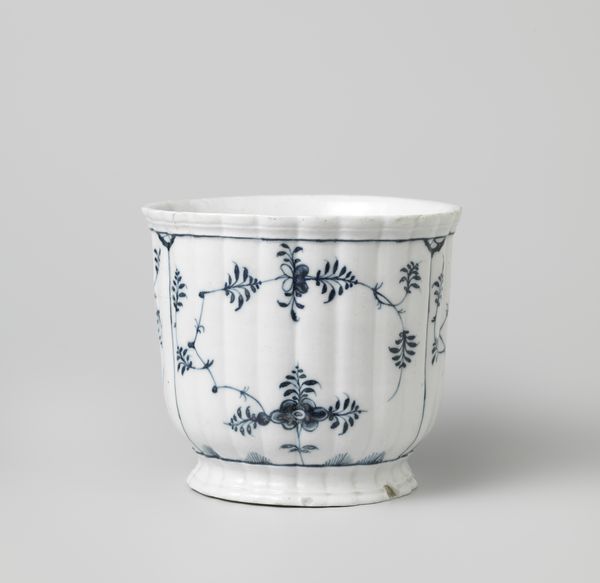
glass
#
glass
#
decorative-art
Dimensions: H. 3 1/2 in. (8.9 cm); Diam. 2 3/8 in. (6 cm)
Copyright: Public Domain
This late 19th-century American tumbler, made by Dalzell, Gilmore and Leighton, epitomizes the era's fascination with decorative arts for the home. The delicate floral patterns in silver overlay on the white glass reflect the influence of the Aesthetic Movement, where art was meant to be integrated into everyday life, elevating even the simplest object. Made in a period of rapid industrialization and social change in the United States, the tumbler speaks to the rising middle class's desire for refined goods. The late 1800s saw the expansion of glass manufacturing and techniques that could be widely distributed. The floral motifs mirror a broader cultural interest in nature and beauty, offering a comforting and aesthetically pleasing counterpoint to the grittiness of urban industrial life. Understanding its full significance requires us to look at the material culture of the period, exploring trade catalogs, design magazines, and social histories to fully appreciate its place in the homes and aspirations of its time.
Comments
No comments
Be the first to comment and join the conversation on the ultimate creative platform.
